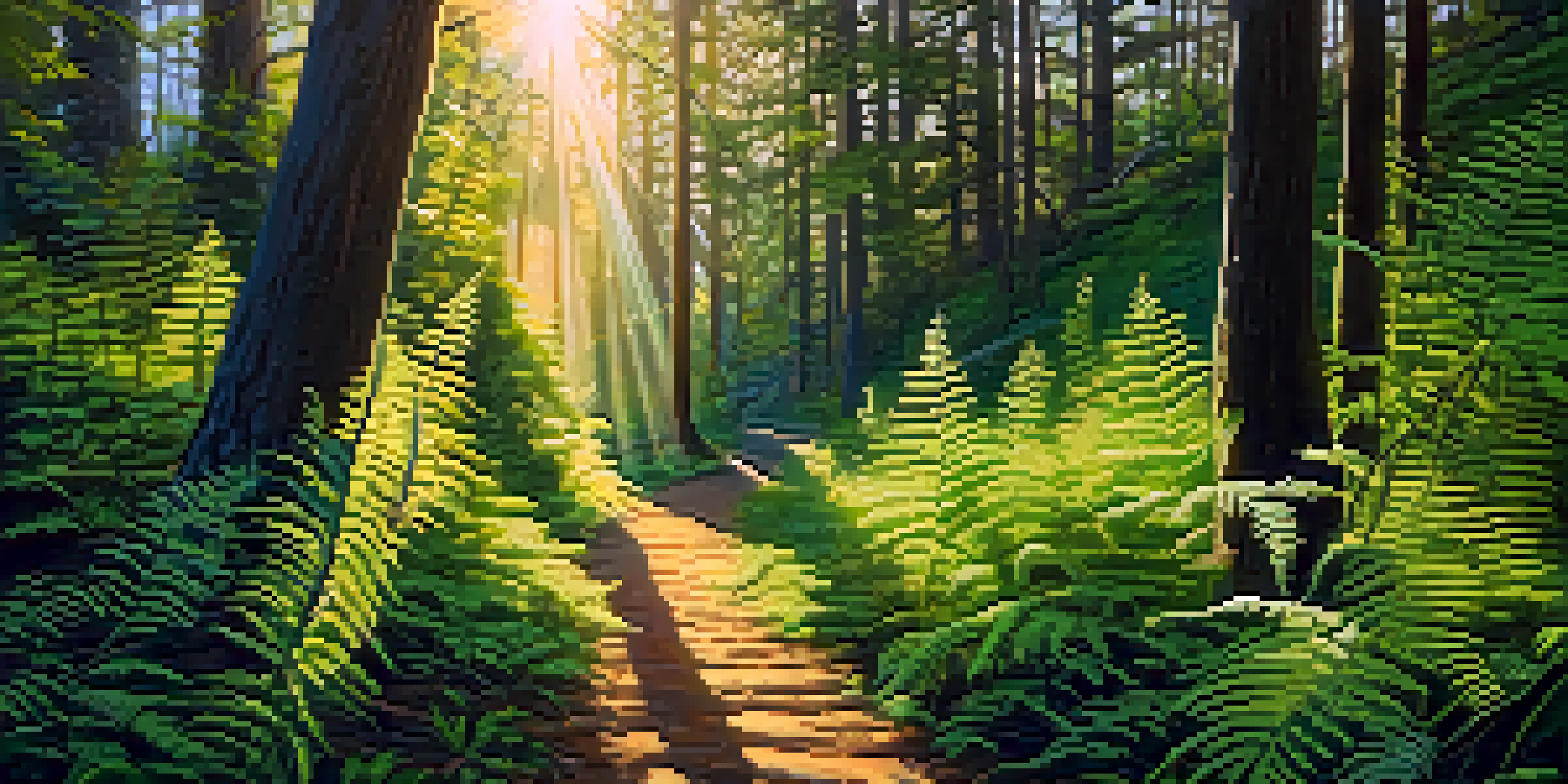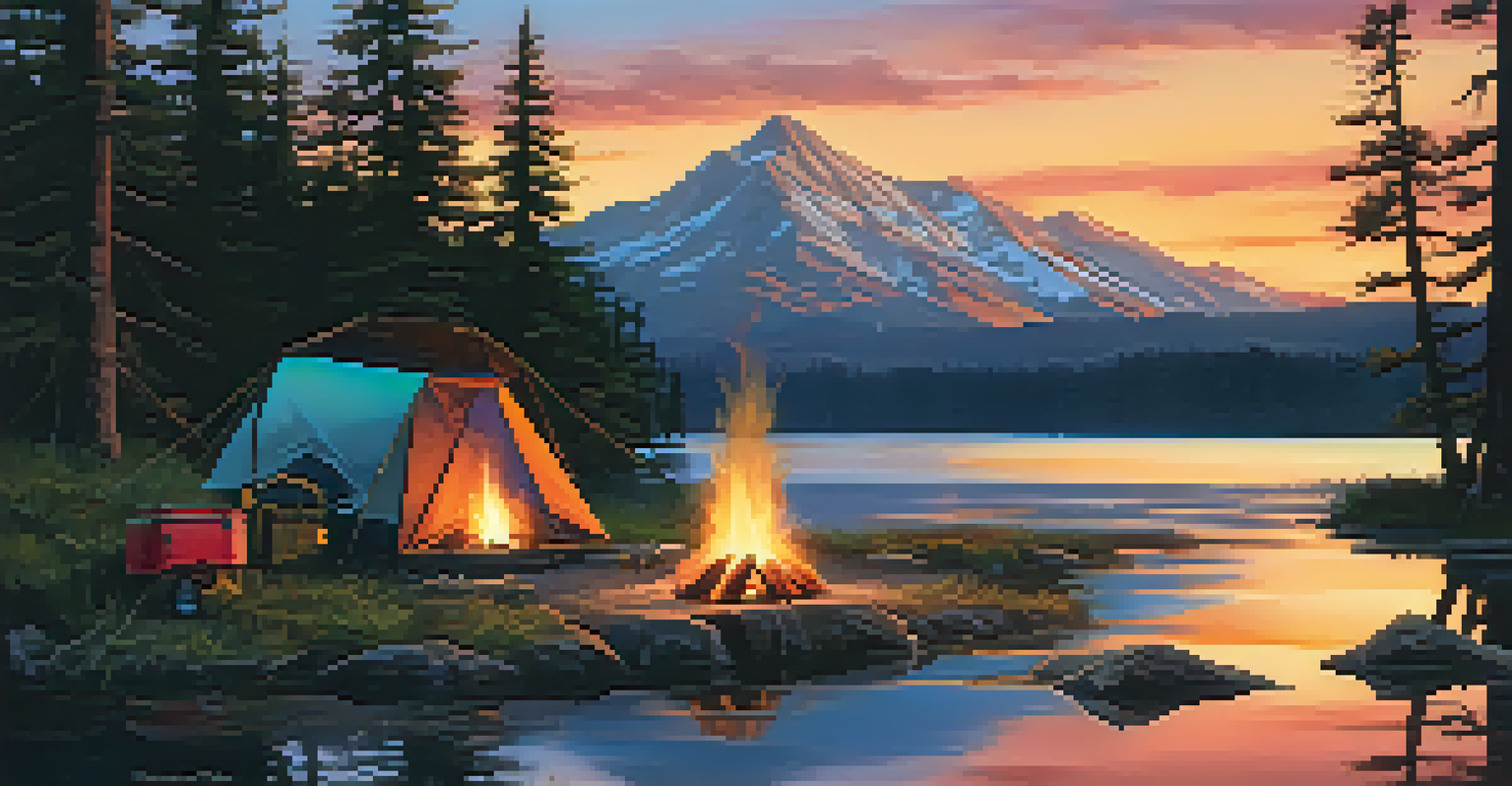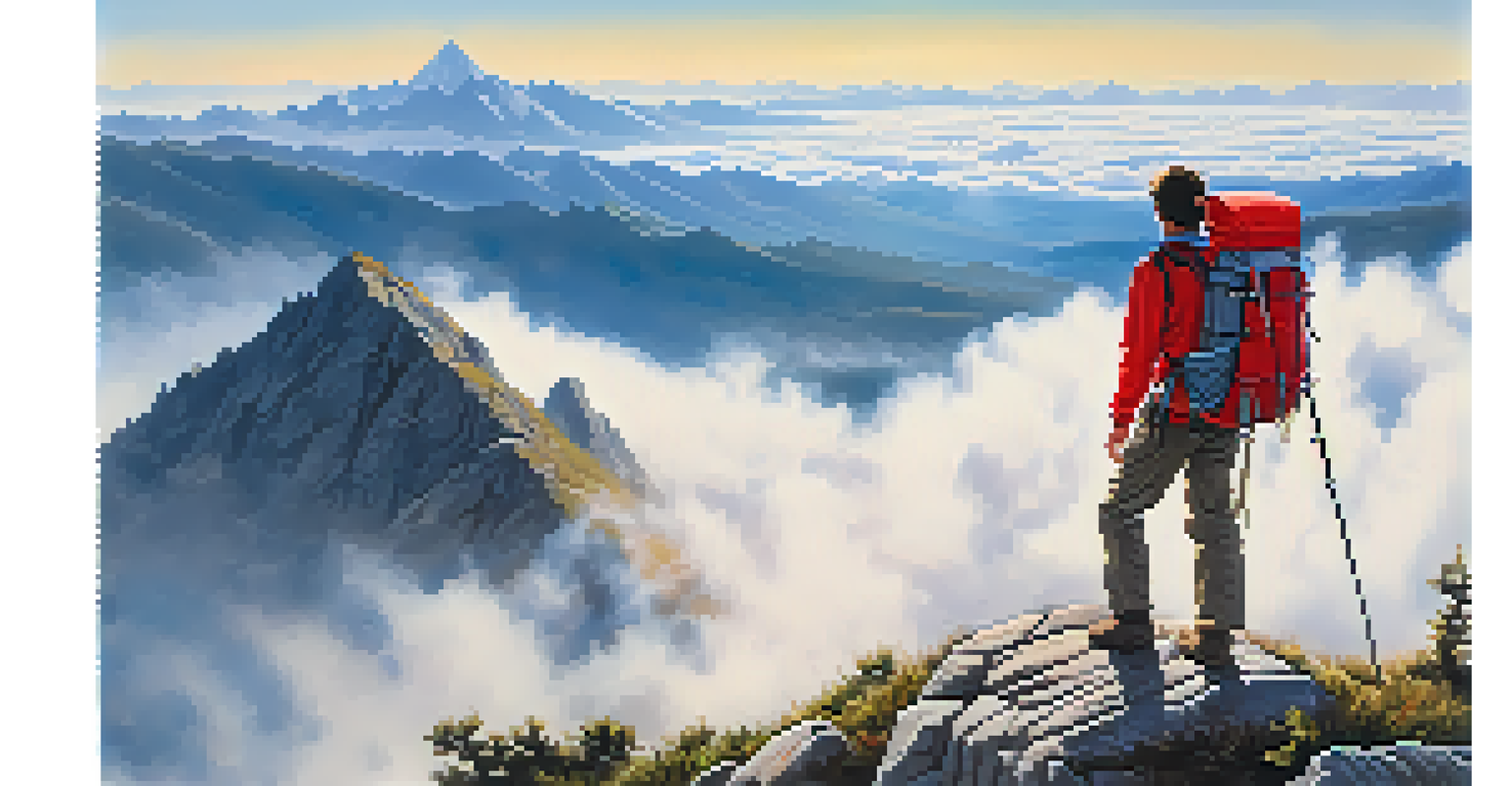Ultimate Guide to Multi-Day Trekking and Camping Adventures

Choosing the Right Trekking Destination for Your Adventure
When it comes to multi-day trekking, selecting the right destination is crucial. Consider your fitness level, interests, and the type of scenery you desire. Whether you prefer lush forests, rugged mountains, or serene coastlines, there’s a perfect trail waiting for you.
In every walk with nature one receives far more than he seeks.
Researching trail conditions and weather forecasts can also make a significant difference in your experience. Some areas may be more accessible during certain seasons, while others can pose challenges like snow or heavy rains. Take the time to read reviews and join forums where fellow trekkers share their experiences.
Lastly, don't forget to check if permits are required for your chosen destination. Some popular trekking routes may have restrictions to preserve the natural environment. Planning ahead will ensure a smoother, more enjoyable adventure!
Essential Gear for Multi-Day Trekking and Camping
Packing the right gear is like having a trusty sidekick on your adventure. Start with a durable backpack that can comfortably hold all your essentials without weighing you down. Look for one with adjustable straps and a hip belt to distribute the weight evenly.

Don’t skimp on sleeping gear either; a quality sleeping bag and mat can make all the difference for a good night’s sleep under the stars. Consider the temperature ratings of your sleeping bag and choose a mat that provides insulation from the cold ground.
Choose Your Trekking Destination Wisely
Selecting the right trekking destination based on your fitness level and preferences is essential for an enjoyable adventure.
Lastly, always bring a reliable first-aid kit and navigation tools. Even on well-marked trails, having a map and compass or GPS can help you feel secure. You can never be too prepared when it comes to the great outdoors!
Planning Your Itinerary: Balancing Adventure and Rest
Creating a balanced itinerary is key to enjoying your trekking adventure. While it’s tempting to pack in as much as possible, remember that rest days are just as important as hiking days. Allow time to soak in the scenery and recharge your energy.
The journey of a thousand miles begins with one step.
Consider the distances you’ll be trekking each day. A good rule of thumb is to limit yourself to 8-12 miles, depending on your fitness level and trail difficulty. This approach ensures you won’t feel rushed and can truly appreciate the journey.
Also, keep in mind the importance of hydration and meals. Plan your water sources and meal breaks thoughtfully, so you stay energized throughout the trek. Balance is everything; you want to enjoy the adventure without burning out!
Navigating the Wilderness: Safety Tips for Trekkers
Safety should always be a priority when trekking in the wilderness. Familiarize yourself with basic survival skills, such as how to build a fire, purify water, and construct a shelter. These skills can be invaluable in case of unexpected situations.
Stay informed about the wildlife in the area as well. Knowing what animals you might encounter and how to react can help you feel more at ease. For instance, understanding how to store food to avoid attracting bears is essential in many regions.
Pack Essential Gear for Comfort
Having the right gear, including a durable backpack and quality sleeping equipment, significantly enhances your camping experience.
Lastly, always let someone know your itinerary. Whether it’s a friend or a park ranger, having someone aware of your plans can be a lifesaver in emergencies. A little caution goes a long way in ensuring a safe and enjoyable trek!
Cooking and Nutrition on the Trail: Easy Meal Ideas
Eating well during your trek can enhance your energy levels and overall enjoyment. Opt for lightweight, nutritious foods that are easy to prepare. Dehydrated meals, nuts, and energy bars are excellent choices for quick snacks on the go.
Consider meal prepping before your trip. Make simple recipes that can easily be cooked over a camp stove or fire, like pasta with veggies or rice and beans. Don’t forget to pack spices and condiments to elevate your meals!
Lastly, ensure you stay hydrated. Carry a water filter or purification tablets to make sure you have access to clean drinking water. Proper nutrition and hydration will keep you fueled for those long days of hiking!
Leave No Trace Principles: Protecting Nature on Your Trek
As adventurers, it’s our responsibility to protect the beautiful landscapes we explore. The Leave No Trace principles are a set of guidelines that help minimize our impact on the environment. Start by planning ahead and staying on marked trails.
Pack out what you pack in, including all trash and leftover food. It’s easy to forget how our small actions can impact wildlife and ecosystems. By being mindful, we can ensure that future generations enjoy the same stunning views we do.
Prioritize Safety and Nutrition
Staying safe in the wilderness and maintaining proper nutrition through thoughtful meal planning are vital for a successful trek.
Additionally, respect wildlife by observing from a distance and never feeding them. This keeps both you and the animals safe. Practicing these principles not only protects nature but also enriches your experience in the great outdoors.
Capturing Memories: Tips for Outdoor Photography
Documenting your trekking adventure is a fantastic way to preserve those precious memories. Start by familiarizing yourself with your camera or smartphone settings before hitting the trail. Knowing how to adjust for different lighting conditions will help you capture stunning images.
Consider bringing a lightweight tripod for stability, especially during sunrise or sunset when lighting can be tricky. A steady shot can make all the difference in how your photos turn out, so it’s worth the extra weight.

Lastly, don’t just focus on the landscapes; capture the little moments too! A candid shot of your hiking buddy sharing a laugh or a close-up of a wildflower can tell the story of your adventure just as much as the grand vistas.